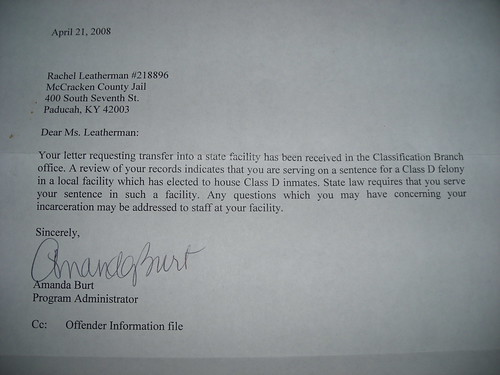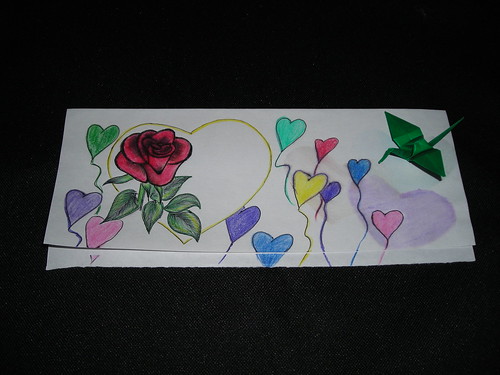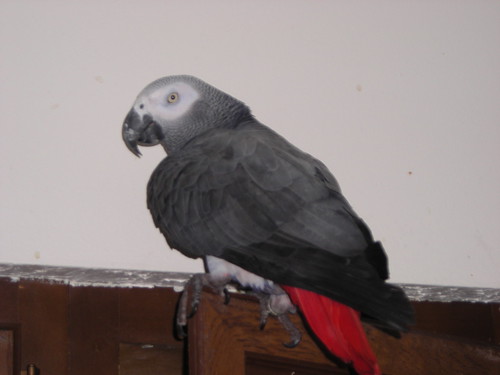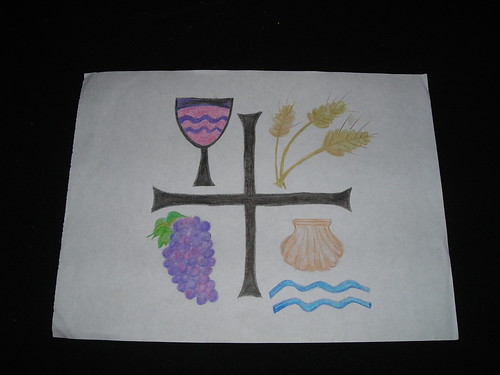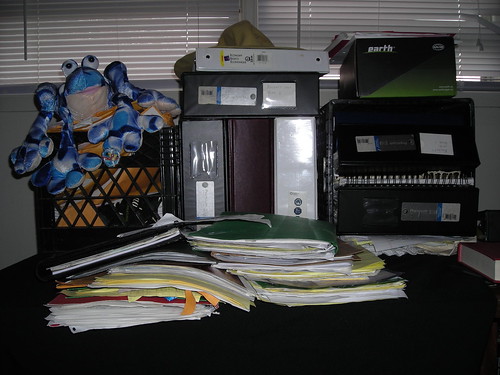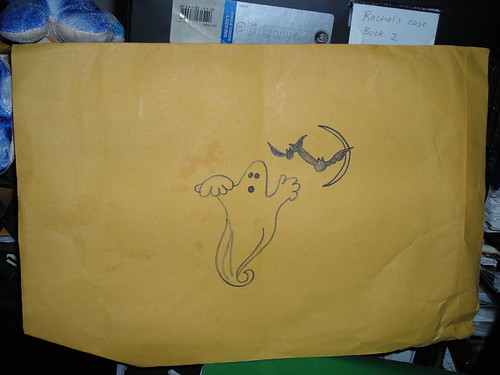“Freight trained!”
“Only with a bull it’s worse…”
Before you read this post, take a look at this letter from DOC and bear in mind that I have an eight-year sentence:
Roxi, my sister’s Cocker Spaniel, jail art by Crane-Station on flickr:
McCracken County Jail, after the hole, January 2008
“You have to understand that you’re in jail,” says Garrison, a high-ranking McCracken County Jail officer. Garrison is wearing a crisp, white shirt. His good looks have probably assured him status in all the right cliques, from high school (football I assume) days to the present. Garrison’s soft-spoken, understated manner makes him an effective officer, I think. His demeanor commands wide-spread respect from inmates.
I have requested placement into one of the smaller cells at the back of the jail rather than one of the large overpopulated ‘population’ cells, and cited several psychiatric diagnoses to support the request.
He says, “Now, if you didn’t want to be here you shouldn’t have done all those crimes, I read the charges. This ain’t the Marriott, this is jail, and we don’t make special exceptions for anyone. We provide a safe environment with three meals a day and TV and that’s a lot more than a lot of people have on the streets…”
He is going to place me in a large population cell, and my heart sinks because I am not sure I can handle dueling screaming asylums: one in my head and the other in the environment around my head. The synergistic pitch alone could lead to a violent hemorrhagic event that would leave me bleeding from my eyeballs.
There are many Garrisons out there, who wear white shirts, because they are in the business of pest control. Where to warehouse and entomb the vermin? Where to stash society’s lower companionship? Such decisions.
However, God smiles this day, and guard Sally leads me to Cell 107. What a blessing. My prayers are answered.
I begin writing down everything I see and hear. Most of what follows is verbatim, from my notes, pages 9 through 14.
(Private joke: God divided by zero and got my notes.)
The cell is the size of a tiny garage. The bolted steel door has a hinged metal flap that is opened from the outside. After the steel door closes, I notice that a previous occupant/artist has penned three verbs that make newcomers feel cozy and right at home: “Kill. Fuck. Die.” in no-shank pen block letters. Below that a verb, then an article, then a noun: “Fuck The World.” As I have explained, the artist then outlined the small window in the door with a border to make the window look like a TV, and even added a rabbit-ear antenna. The ‘volume’ knob is labeled “valium,” and the maximum setting is labeled “10 mg.”
Three bullet-proof glass windows face the hallway. The rest is standard fare for a kennel: six people in a four-person tomb sharing one steel toilet; a lingering smell that is typical of jam-packed humans; no view to the outside; so little room that you can only do a few standing-in-place exercises or push ups against the cement wall; fluorescent lighting 24/7; ice cold that re-triggers traumatic arthritis; maniacal laughing and shouting all hours of the day and night; a man screaming, “PLEASE!!! Help Me! Let Me out!! HELPmehelpmehelpmehelpme Help!” all hours of the day and night, with the whole Daliesque, grey cement landscape dotted with focused, albeit narrow, religious pamphlets, bibles and study guides.

photo by jef safi (writing) under creative commons on flickr with the explanation:
slεεp oƒ thε paranoıa-crıtıcıst rhızomε . .
Dream Caused by the Feverish Flight of a Concupiscent Pigeon Around a Daliesque Girona’s place One Second Before the Nightmare of Awakening.
I can hear in my mind, horsemen on the horizon, Ka-ka Kunk, Ka-Ka Kunk, Ka-ka kunk.
I spot an ice water thermos on a cement ledge at the entrance to the toilet. I get a drink of water. I see an M and M bag that seems to have been abandoned. I pick it up, empty out what is left of the M and Ms and eat them.
A while later, Leese is in the toilet and there is an ear-piercing shriek: “Who took my M an Ms!!! Oh my gawwwwwd, my M and Ms, they are gone, they were just here!” Leese is hysterical, on the verge of tears.
“Um,” I begin. “Man, I am so sorry, I ate them. I did not realize they were yours.”
“You fucking old-ass bitch!” she shouts. “They were my makeup! You ate my fucking makeup!”
A round of snickers in the cell.
Color me Scarlet Letter. I am now, officially, the lowest of the lowest of the low and much less. In a record-breaking ten minutes I am close to being voted off of Inmate Island. Another way of putting it, in urban slang: I am going down.
In time, we heal the relationship. I replace her Max Factor M and Ms. One day, Leese hands me a poem she has written. The poem is four pages long. She says, “Here. Put this in your book.”
The poem is titled, You Paid the Price, But it Couldn’t Be Bought.
It reads:
Sick of the darkness, sick of the light
Sick of the day, sick of the night.Sick of the quiet, sick of the noise
Sick of the games, sick of the toys.Sick of the shoes, sick of my feet,
Sick of the cold, sick of the heat.Sick of being happy, sick of being sad,
Sick of doing good, sick of being bad.
As I read, I can feel tears form. The tears are warm. They drop onto the cement. And the poem continues…

